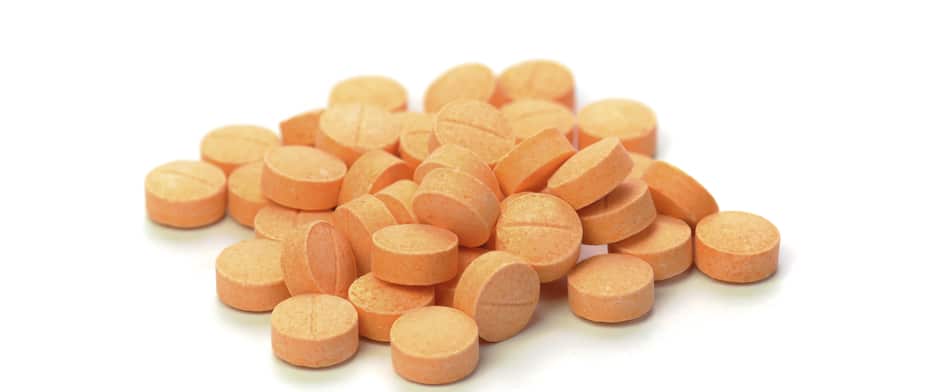Table of contents
Adderall dependence and addiction is more common than you might think. If you’ve been using Adderall to get high, study, or complete tasks for school or work, stopping might not be as easy as it sounds. Since it’s an addictive stimulant, consistent use of Adderall can cause dependence and withdrawal symptoms when you cut back or quit using it entirely.
If you want to stop using Adderall but you’re not sure how, this guide will help. Below, we’ll provide a brief overview of withdrawal symptoms and the Adderall withdrawal timeline so you know what to expect and how you should proceed to get help.
Adderall overview
Adderall is a combination of amphetamine and dextroamphetamine that’s used to treat attention deficit hyperactivity disorder (ADHD) and narcolepsy. It’s a stimulant that can help you focus on tasks, pay attention, and control behavior problems.1
Unfortunately, due to its performance-enhancing and euphoric side effects, it’s also frequently misused by people who are trying to improve their performance at school or work or who use it to get high. People who abuse Adderall get it from doctors or off the black market. According to the National Institute on Drug Abuse (NIDA), Adderall goes by many street names including:2
- Addys
- Bennies
- Beans
- Black Beauties
- Crosses
- Hearts
- Ivy League Drug
- Pep Pills
- Speed
- Uppers
What is Adderall withdrawal?
Adderall increases the activity of neurotransmitters (brain chemicals) called norepinephrine and dopamine, which play a role in feeling pleasure, brain functions like focus and motivation, and mood regulation. When you use Adderall regularly, your brain gets used to increased levels of these neurotransmitters and struggles to function well with what it believes to be low levels of these brain chemicals when you stop using it.
Adderall can cause physical dependence among those who use it regularly. If you notice that you need more frequent or higher doses of Adderall to get the effects you want, that means you’ve developed a tolerance.
As a result, you’re likely to experience uncomfortable physical symptoms when you cut back or try to stop using it. This is known as Adderall withdrawal, and it’s essentially your body adjusting to functioning without the drug.
Symptoms of Adderall withdrawal
If you haven’t previously struggled with addiction, you might not notice that you’re experiencing withdrawal symptoms at first. However, prescription amphetamine withdrawal is extremely common, with the majority of addicted individuals experiencing several of the following symptoms about 24 hours after their last dose.3
Common Adderall withdrawal symptoms include:
- Fatigue
- Difficulty sleeping
- Poor concentration
- Vivid of unpleasant dreams
- Increased appetite
- Cravings
- Paranoia
- Anxiety
- Irritability
- Depression
This is not an inclusive list of withdrawal symptoms and the experience of detoxing from prescription stimulants varies from person to person. However, generally speaking, the severity of these Adderall withdrawal symptoms will depend on how frequently you used Adderall and their overall health. So, if you’ve misused Adderall heavily for a long time, you might experience more severe withdrawal symptoms.
Although Adderall withdrawal is rarely deadly, it can be very uncomfortable. In some people, it can also cause suicidal thoughts or behaviors, so it’s important to seek professional help if you’re addicted to Adderall and want to stop using it. Consult with your doctor or enroll in an Adderall detox program to get help dealing with uncomfortable Adderall withdrawal symptoms.
How long does Adderall withdrawal last?
Typically, Adderall withdrawal symptoms start appearing a day or two after your last dose. They can last anywhere from a few days to a few weeks. The half-life of Adderall (which is the amount of time it takes for the active ingredients in your body to reduce by half) is about 9 to 14 hours.4
Again, this will vary from person to person and will depend on factors like:
- How long you’ve been taking Adderall
- How much Adderall you typically take each time you use it
- Your metabolism
- How old you are
- Other individual factors and your overall health
It’s also important to mention that quitting Adderall cold turkey on your own is more likely to produce severe and long-lasting withdrawal symptoms. In contrast, detoxing under the supervision of your doctor or at an Adderall detox center will help reduce the severity of Adderall withdrawal symptoms as well as the amount of time it takes to detox.
Adderall withdrawal timeline
Undoubtedly, withdrawal is the most intimidating aspect of quitting Adderall. However, knowing what to expect can help you take the first steps to get sober and cope with any uncomfortable symptoms you experience during withdrawal.
If you’re wondering what the Adderall withdrawal timeline looks like, here’s a general outline. Just remember that withdrawal can vary greatly depending on the person, so your experience may be different.
Peer-reviewed research indicates there are generally two phases of Adderall withdrawal:
- Phase 1 (“The Crash”)
The first phase of Adderall withdrawal is known as the “crash” and the first symptoms usually appear about 24 hours after your last dose. Intense depression and fatigue are very common during this phase, as well as increased appetite. You might start feeling these side effects as soon as a few hours after your last dose. You’re also likely to feel very irritable, depressed, and tired, although many people have trouble sleeping and headaches, which can make it difficult to rest. Typically, this is the worst part of Adderall withdrawal and your symptoms will decrease in intensity from here. This first stage tends to last about a week but this time frame can vary.
- Subacute, protracted withdrawal
The second phase of Adderall withdrawal is less intense than the first, but can last a few weeks. About a week after you stop using Adderall, the most intense symptoms of withdrawal will be over, but you might still have difficulty sleeping and feel more hungry than usual. Many people also continue experiencing symptoms of mild depression that can persist for several weeks.
How to cope with Adderall withdrawal
As you can see, Adderall withdrawal symptoms can be quite intense (especially the first few days), so it’s best to get professional help if you’re trying to stop using it. We recommend consulting with your doctor if you plan to stop using Adderall. Or, you can get individualized Adderall detox treatment at one of our detox centers.
An accredited drug detox center that uses evidence-based treatment methods will ensure that you are safe and comfortable while you detox. At many of these facilities, you’ll stay there for the duration of your detox treatment and you’ll have limited access to the outside world. (This gives you time and space to focus on your recovery with fewer distractions and temptations.)A team of doctors, nurses, and counselors will work together to provide medication-assisted treatment for the physical withdrawal symptoms and help you cope with the psychological symptoms of withdrawal as well.
Although research shows no specific medication is effective for the treatment of prescription amphetamine withdrawal, medication-assisted treatment can help reduce the severity of specific withdrawal symptoms.5 Behavioral therapy and counseling can also help you manage psychological symptoms of Adderall withdrawal and sustain your sobriety.
Recovering from Adderall addiction
Experiencing Adderall withdrawal symptoms might prompt you to go back to abusing it again, even if you really want to get sober. You’ll need support to resist Adderall cravings and adjust to a new, sober lifestyle, so an Adderall detox program and subsequent rehab can help you achieve long-lasting sobriety.
After you detox, ask your doctor or detox treatment facility for recommendations for ongoing treatment. You might feel like your addiction wasn’t severe enough to warrant rehab, but according to the NIDA, “behavioral therapies can be effective in helping people stop prescription stimulant misuse, including cognitive-behavioral therapy and contingency management.”3
Plus, with personalized Adderall detox and addiction treatment, you’ll:
- Be less likely to relapse due to the professional support and limited access to distractions and temptation
- Receive medication-assisted treatment for physical withdrawal symptoms, so you can remain comfortable and safe throughout the whole process
- Get professional help to cope with the psychological symptoms of Adderall withdrawal
- Receive professional recommendations for ongoing care based on your treatment history, severity of addiction, financial ability, and other individual factors
Adderall detox program in Austin, TX
If you’re searching for Adderall detox in Austin, Texas or Houston, Texas, look no further than Briarwood Detox Center. In addition to educating you on the Adderall withdrawal timeline, we can help you through the process and ensure your comfort and safety. After your complete detox, we can also provide recommendations for an Austin drug rehab program where you can continue your treatment with the help of experienced professionals.
You may feel hopeless, but it’s possible to recover from Adderall addiction and there is hope and healing waiting for you on the other side. Start your journey today by calling (512) 262-4426 or contacting us online.
References:
- https://www.webmd.com/drugs/2/drug-63163/adderall-oral/details
- https://www.drugabuse.gov/drug-topics/commonly-used-drugs-charts
- https://www.drugabuse.gov/publications/drugfacts/prescription-stimulants
- https://www.accessdata.fda.gov/drugsatfda_docs/label/2007/011522s040lbl.pdf
- https://www.ncbi.nlm.nih.gov/pmc/articles/PMC7138250/


